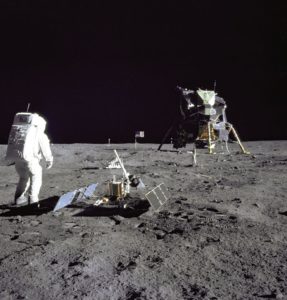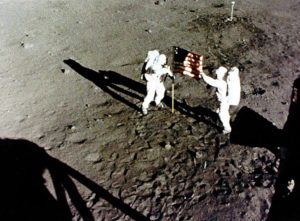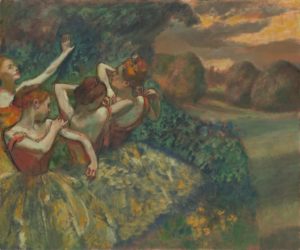-
January
-
February
- This Week in History: February 6-12 – Lesson
- This Week in History: February 6-12 – Quiz
- This Week in History: February 13-19 – Lesson
- This Week in History: February 13-19 – Quiz
- This Week in History: February 20-26 – Lesson
- This Week in History: February 20-26 – Quiz
- This Week in History: February 27-March 5 – Lesson
- This Week in History: February 27-March 5 – Quiz
-
March
- This Week in History: March 6-12 – Lesson
- This Week in History: March 6-12 – Quiz
- This Week in History: March 13-19 – Lesson
- This Week in History: March 13-19 – Quiz
- This Week in History: March 20-26 – Lesson
- This Week in History: March 20-26 – Quiz
- This Week in History: March 27-April 2 – Lesson
- This Week in History: March 27-April 2 – Quiz
-
April
- This Week in History April 3-9 – Lesson
- This Week in History April 3-9 – Quiz
- This Week in History: April 10-16 – Lesson
- This Week in History: April 10-16 – Quiz
- This Week in History: April 17-23 – Lesson
- This Week in History: April 17-23 – Quiz
- This Week in History: April 24-30 – Lesson
- This Week in History: April 24-30 – Quiz
-
May
- This Week in History: May 1 – 7 – Lesson
- This Week in History: May 1 – 7 – Quiz
- This Week in History: May 8 – 14 – Lesson
- This Week in History: May 8 – 14 – Quiz
- This Week in History: May 15 – 21 – Lesson
- This Week in History: May 15 – 21 – Quiz
- This Week in History: May 22-28 – Lesson
- This Week in History: May 22-28 – Quiz
- This Week in History: May 29-June 4 – Lesson
- This Week in History: May 29-June 4 – Quiz
-
June
- This Week in History: June 5 – 11 – Lesson
- This Week in History: June 5 – 11 – Quiz
- This Week in History: June 12-18 – Lesson
- This Week in History: June 12-18 – Quiz
- This Week in History: June 19-25 – Lesson
- This Week in History: June 19-25 – Quiz
- This Week in History: June 26 – July 2 – Lesson
- This Week in History: June 26 – July 2 – Quiz
-
July
- This Week in History: July 3 – 9 – Lesson
- This Week in History: July 3 – 9 – Quiz
- This Week in History: July 10 – 16 – Lesson
- This Week in History: July 10 – 16 – Quiz
- This Week in History July 17 – 23 – Lesson
- This Week in History July 17 – 23 – Quiz
- This Week in History – July 24-30 – Lesson
- This Week in History – July 24-30 – Quiz
- This Week in History: July 31 – August 6 – Lesson
- This Week in History: July 31 – August 6 – Quiz
-
August
- This Week in History: August 7-13 – Lesson
- This Week in History: August 7-13 – Quiz
- This Week in History: August 14 – 20 – Lesson
- This Week in History: August 14 – 20 – Quiz
- This Week in History: August 21 – 27 – Lesson
- This Week in History: August 21 – 27 – Quiz
- This Week in History: August 28 – September 3 – Lesson
- This Week in History: August 28 – September 3 – Quiz
-
September
- This Week in History: September 4 – 10 – Lesson
- This Week in History: September 4 – 10 – Quiz
- This Week in History: September 11 -17 – Lesson
- This Week in History: September 11 -17 – Quiz
- This Week in History: September 18 – 24 – Lesson
- This Week in History: September 18 – 24 – Quiz
- This Week in History: September 25 – October 1 – Lesson
- This Week in History: September 25 – October 1 – Quiz
-
October
- This Week in History: October 2-8 – Lesson
- This Week in History: October 2-8 – Quiz
- This Week in History: October 9 –15 – Lesson
- This Week in History: October 9 –15 – Quiz
- This Week in History: October 16–22 – Lesson
- This Week in History: October 16–22 – Quiz
- This Week in History: October 23–29 – Lesson
- This Week in History: October 23 –29 – Quiz
- This Week in History: October 30 – November 5 – Lesson
- This Week in History: October 30 – November 5 – Quiz
-
November
- This Week in History: November 6 – 12 – Lesson
- This Week in History: November 6 – 12 – Quiz
- This Week in History: November 13 – 19 – Lesson
- This Week in History: November 13 – 19 – Quiz
- This Week in History: November 20 – 26 – Lesson
- This Week in History: November 20 – 26 – Quiz
- This Week in History: November 27- December 3 – Lesson
- This Week in History: November 27- December 3 – Quiz
-
December
This Week in History July 17 – 23 – Lesson

(Photo by Heritage Space/Heritage Images via Getty Images)
“One small step for man” – the first landing on the moon.
“Neither the life of an individual nor the history of a society can be understood without understanding both.” ~ C. Wright Mills
July 20, 1969: First Man on the Moon
With today’s technology, landing on the moon might not seem like a big feat. But, 53 years ago, this was one of the days that would forever find its spot in history.
On July 20, 1969, Neil Armstrong and Edwin “Buzz” Aldrin became the first humans to step onto the moon, and Armstrong spoke those famous words:
“That’s one small step for man, one giant leap for mankind.”
Later, however, Armstrong admitted that the microphone he had used to speak those words had garbled his message, leaving out the “a” in “that’s one small step for [a] man.”
Getting there took quite a bit of work. Apollo 11’s mission happened eight years after President John F. Kennedy announced his intention to put a man on the moon. He told Congress, “I believe this nation should commit itself to achieving the goal, before this decade is out, of landing a man on the moon and returning him safely to Earth.”
During this time, the US and the Soviet Union were in the middle of the Cold War, and both countries raced to be the first to put a person on the moon. It took five years after Kennedy’s speech before the first unmanned Apollo test mission could happen.

(Photo by NASA/ullstein bild via Getty Images)
Then, at the Kennedy Space Center in Cape Canaveral, Florida, on January 27, 1967, a fire broke out during a launch-pad test for a manned mission, killing three astronauts. Still, NASA continued with trials, and in October 1968, the first manned mission, Apollo 7, successfully orbited Earth. Several more Apollo missions tested other areas that needed to be explored. In December 1968, Apollo 8 took three astronauts to the dark side of the moon, and in May 1969, Apollo 10 went on the first trip around the moon as a dry run for the real thing.
At 10:56 p.m. on July 20, 1969, Armstrong stepped off the ladder from Apollo 11 and onto the moon, becoming the first human to do so. “Buzz” Aldrin joined him 19 minutes later and the two astronauts planted the US flag and took photographs of the area. Richard Nixon was president at the time. He spoke with Armstrong and Aldrin using a telephone radio transmission, which he said was the “most historic phone call ever made from the White House.”
The astronauts slept that night on the surface of the moon before returning to Earth. They left a few things on the moon for other travelers to find, including a plaque that read: “Here men from the planet Earth first set foot on the moon – July 1969 A.D. – We came in peace for all mankind.”
Other Notable History Mentions
July 17, 1996: TWA Flight 800 apparently experienced mechanical failure and exploded mid-air just 12 minutes after leaving Kennedy International Airport in New York.
 July 18, 1947: President Harry Truman signed the Presidential Succession Act, which explained how succession of the president will happen if the commander-in-chief becomes incapacitated or dies. This became the 25th Amendment.
July 18, 1947: President Harry Truman signed the Presidential Succession Act, which explained how succession of the president will happen if the commander-in-chief becomes incapacitated or dies. This became the 25th Amendment.
July 19-20, 1848: A women’s rights convention was held in New York. This started the beginning of an organized movement for women’s rights in the US.
July 20, 1964: Hostilities between French forces in Vietnam and the People’s Army of Vietnam ended after an agreement was signed in Geneva, Switzerland.
July 21, 1898: Spain ceded Guam to the US.
July 22, 1934: The infamous bank robber John Dillinger was killed by the FBI. He was the first criminal in history that the FBI labeled “Public Enemy No. 1.”
July 23, 1952: Army officers in Egypt launched a successful revolution that changed the country from a monarchy to a republic.
Famous Birthdays

Four Dancers by Edgar Degas. (Photo by Heritage Art/Heritage Images via Getty Images)
Luis Munoz-Rivera (July 17, 1859) was born in Barranquitas, Puerto Rico. He was a patriot who worked hard to get self-government for his country.
Samuel Hayakawa (July 18, 1906) was born in Vancouver, British Columbia. A Republican politician, he led the initiative to declare English as California’s official language in 1986.
Nelson Mandela (July 18, 1918) was born in the South African village Mvezo. A lawyer, he also became the first elected president of South Africa in 1994.
Edgar Degas (July 19, 1834) was born in Paris, France. An impressionist painter, he is known or his paintings of dancers in motion.
Edmund Hillary (July 20, 1919) was born in Auckland, New Zealand. He was the first person to climb the highest mountain in the world, Mt. Everest (29,023 feet).
Ernest Hemingway (July 21, 1899) was born in Oak Park, Illinois. A writer, he is famous for such works as For Whom the Bell Tolls and The Old Man and the Sea. He won the Nobel Prize in 1954.
Marshall McLuhan (July 21, 1911) was born in Edmonton, Alberta, Canada. A university professor, he is known for talking about modern mass communication, saying, “The medium is the message.”